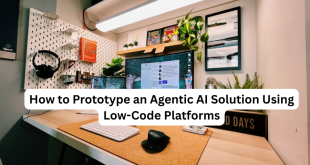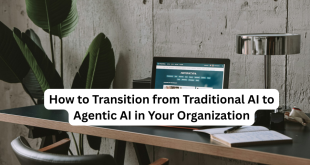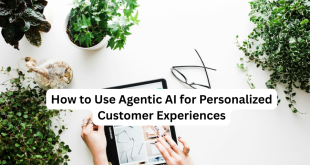Agentic AI—autonomous systems that make decisions and act independently—is transforming small businesses, from automating customer support to optimizing supply chains. However, with great power comes great responsibility. These systems, which handle sensitive data and critical tasks, are prime targets for cybercriminals. In 2024, 97% of organizations reported AI-related security incidents, underscoring the need for robust protection. This blog post provides a practical, step-by-step guide to securing your agentic AI system against cyber threats, ensuring your business stays safe and trusted.
Why Agentic AI Needs Extra Security
Unlike traditional AI, agentic AI operates with a degree of autonomy, making decisions that impact customers, finances, and operations. This independence amplifies risks:
- Data Breaches: AI agents often process sensitive information, like customer details or proprietary business data.
- Manipulation: Hackers can tamper with AI models, causing incorrect decisions (e.g., approving fraudulent transactions).
- System Downtime: Attacks like ransomware can disrupt AI-driven workflows, costing time and revenue.
Securing your agentic AI isn’t just about compliance—it’s about protecting your business’s reputation and bottom line. Here’s how to do it.
Step 1: Choose a Secure Platform
The foundation of a secure agentic AI system is the platform you build it on. Opt for reputable providers with strong security features tailored for small businesses.
- Cloud Providers: Platforms like Microsoft Azure AI, Google Cloud AI, or AWS AI offer built-in encryption, access controls, and compliance with standards like GDPR and CCPA.
- Open-Source Tools: If using frameworks like Rasa or Hugging Face, ensure they’re hosted on secure servers and regularly updated to patch vulnerabilities.
- Low-Code Options: Tools like Microsoft Power Apps include enterprise-grade security, such as role-based access, even for non-technical users.
Action Item: Research your platform’s security certifications (e.g., ISO 27001 or SOC 2). For example, Azure’s security documentation confirms end-to-end encryption. Avoid obscure providers with unclear security policies.
Step 2: Encrypt Data at All Stages
Agentic AI relies on data—customer inquiries, sales records, or inventory logs. Encrypting this data protects it from unauthorized access, whether it’s being stored, processed, or transmitted.
- At Rest: Ensure data stored in databases or cloud servers is encrypted. Most cloud platforms, like Google Cloud, enable this by default.
- In Transit: Use secure protocols (e.g., HTTPS or TLS) for data moving between your AI system and users or other systems.
- During Processing: Advanced platforms support homomorphic encryption, allowing AI to process encrypted data without decrypting it (though this is optional for small businesses due to cost).
Action Item: Check your platform’s encryption settings. For instance, in AWS, enable encryption for S3 buckets. If using open-source tools, configure SSL/TLS for data transfers. Test encryption by simulating a data access attempt.
Step 3: Implement Strong Access Controls
Limit who can interact with your agentic AI to prevent unauthorized access or tampering.
- Role-Based Access Control (RBAC): Assign permissions based on job roles. For example, only managers can modify AI decision rules, while support staff can view logs.
- Multi-Factor Authentication (MFA): Require multiple verification steps (e.g., password + mobile app code) for accessing AI dashboards or APIs.
- API Security: If your AI integrates with external tools (e.g., a CRM), secure APIs with tokens or OAuth to prevent misuse.
Example: A small retailer using a chatbot on Microsoft Power Apps restricted admin access to two employees, reducing the risk of internal breaches.
Action Item: Set up RBAC and MFA on your platform. Azure and Google Cloud offer intuitive dashboards for this. Review access logs weekly to spot unusual activity.
Step 4: Regularly Update and Patch Systems
Cyber threats evolve rapidly, and outdated software is a common entry point for attacks. Keep your agentic AI system current.
- Platform Updates: Cloud providers like AWS roll out automatic updates, but verify that your account is opted in.
- Open-Source Tools: Manually update frameworks like Rasa or Hugging Face to their latest versions, as they don’t auto-update.
- Dependency Management: Check for vulnerabilities in third-party libraries used by your AI (e.g., Python packages). Tools like Dependabot on GitHub can automate this.
Action Item: Schedule monthly checks for updates. Subscribe to security alerts from your platform provider (e.g., AWS Security Bulletins) to stay informed about patches.
Step 5: Monitor and Audit AI Behavior
Agentic AI’s autonomy makes it critical to monitor its actions for signs of compromise, such as erratic decisions or unexpected outputs.
- Real-Time Monitoring: Use platform tools like Azure Monitor or Google Cloud Logging to track AI performance and flag anomalies (e.g., a chatbot sending unusual responses).
- Regular Audits: Conduct quarterly reviews of AI decision logs to ensure outputs align with business goals and no tampering has occurred.
- Adversarial Testing: Simulate attacks (e.g., feeding malicious inputs) to test your AI’s resilience. Cloud providers often offer penetration testing services.
Example: A small e-commerce business noticed its inventory AI over-ordering stock. An audit revealed a misconfigured API exploited by a supplier, which was quickly fixed.
Action Item: Set up monitoring alerts on your platform for unusual activity (e.g., a spike in API calls). Hire a cybersecurity consultant for a one-time audit if budget allows.
Step 6: Protect Against Model Poisoning
Model poisoning occurs when attackers manipulate the data used to train your AI, leading to biased or harmful decisions. For example, a chatbot trained on tampered data might share sensitive information.
- Data Validation: Vet and clean training data to remove outliers or malicious inputs. Use tools like TensorFlow Data Validation for automated checks.
- Secure Data Sources: Pull data only from trusted sources, like your CRM or verified customer feedback, not public datasets.
- Model Versioning: Save backups of your AI model before retraining, so you can revert if poisoning is detected.
Action Item: Before training your AI, run a data validation check. If using Hugging Face, leverage its dataset preprocessing tools. Store model versions in a secure cloud repository.
Step 7: Educate Your Team
Your employees are your first line of defense. A single phishing email or weak password can compromise your AI system.
- Cybersecurity Training: Teach staff to recognize phishing, use strong passwords, and report suspicious activity. Free resources like Google’s Cybersecurity Training are great for small teams.
- AI-Specific Guidelines: Train employees on safe AI use, such as not sharing API keys or uploading sensitive data to unsecured platforms.
- Incident Response Plan: Create a simple protocol for handling breaches, like isolating the AI system and notifying your platform provider.
Action Item: Schedule a one-hour team training session using a free online course. Draft a one-page incident response plan and share it with staff.
Step 8: Stay Compliant with Regulations
Compliance with data protection laws builds customer trust and avoids hefty fines. Key regulations include:
- GDPR (Europe): Requires user consent for data processing and the right to delete data.
- CCPA (California): Mandates transparency in data collection and opt-out options.
- Industry Standards: For healthcare or finance businesses, comply with HIPAA or PCI-DSS.
Most cloud platforms provide compliance tools, like Azure’s GDPR dashboards, to simplify adherence.
Action Item: Review your AI’s data practices against GDPR or CCPA checklists (available online). Consult a legal expert if handling sensitive data like health records.
Getting Started Today
Securing your agentic AI system is non-negotiable in today’s cyber landscape. By following these steps, you can protect your business, customers, and reputation:
- Choose a secure platform with encryption and compliance features.
- Encrypt data at rest, in transit, and (if feasible) during processing.
- Implement RBAC, MFA, and API security.
- Keep software updated and patched.
- Monitor and audit AI behavior for anomalies.
- Prevent model poisoning with data validation and versioning.
- Train your team on cybersecurity basics.
- Ensure compliance with relevant regulations.
Start small: Enable encryption and MFA on your platform today, and schedule a security review for next month. With these measures, your agentic AI will be a powerful, secure asset for your business.
 UBUCH ubuch | Honest Tech Reviews & Tutorials for Everyone
UBUCH ubuch | Honest Tech Reviews & Tutorials for Everyone




